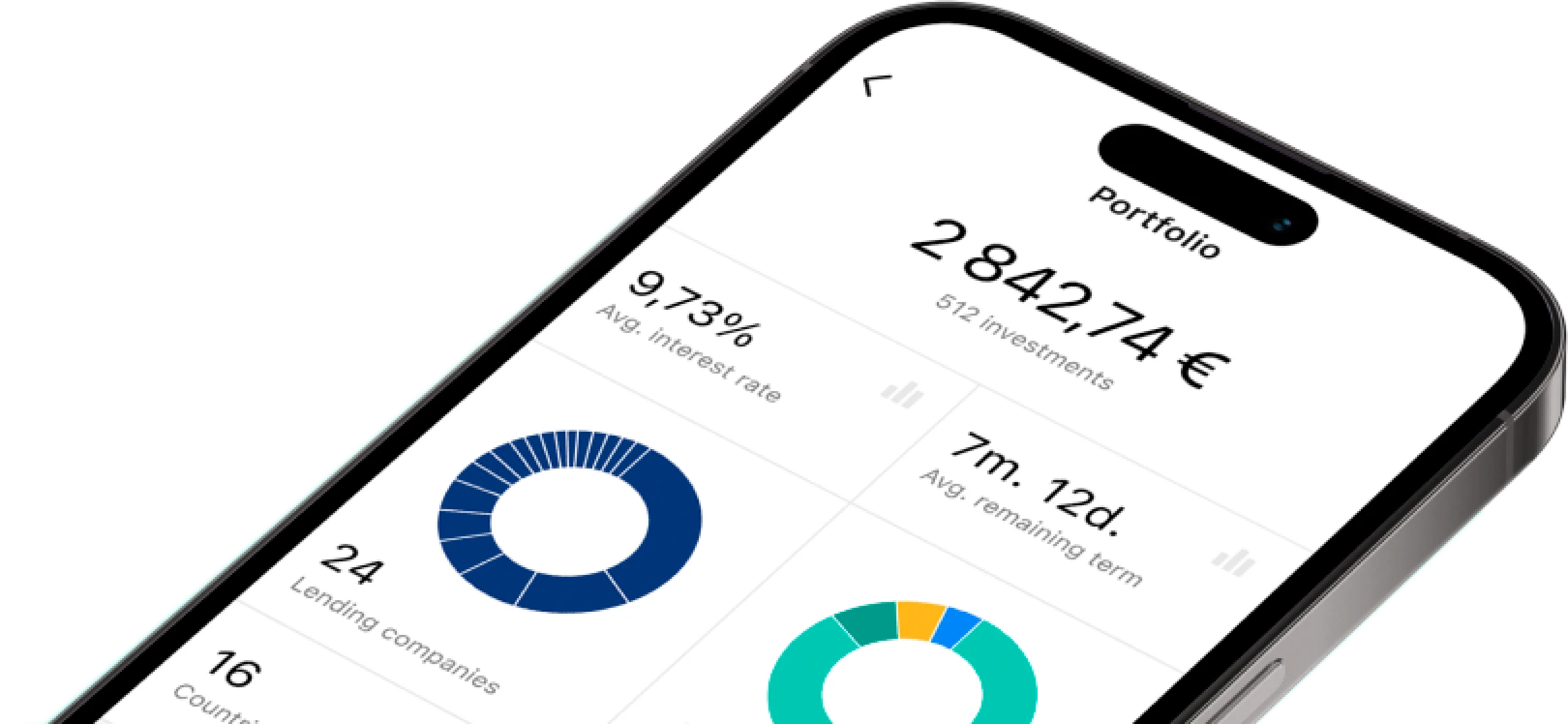Immutable Plavix was created to be the turning point for people looking to become investment literate. The website was created to give the average person access to investment education firms. These firms are dedicated to teaching people about investments, finance, financial instruments, commodities, crypto-assets, and related topics. Immutable Plavix saw the gap between people and investment knowledge, stepped up, and provided a solution.
The founders of Immutable Plavix decided to create an inclusive space for anyone who wished to learn about investment. Immutable Plavix was built to provide access to investment knowledge. Over the years since the launch of this website, our service has remained strong.
The investment education firms that work with Immutable Plavix are partners in this grand vision. Together, they have helped interested people build a solid foundation based on knowledge in the investment and finance sector. Want to be a part of this? Register for free.

Immutable Plavix is based on the premise of a connection. Creating a connection, a link, or becoming a bridge between two parties. These parties are the investment education firms and the people interested in learning about investments.
Immutable Plavix recognizes that education is not a one-size-fits-all thing. So, it does the legwork to ensure users access personalized investment training.
What does this mean? Anyone, whether a beginner or an expert investor, is welcome to learn. Immutable Plavix assigns suitable tutors to them.
Immutable Plavix has inclusivity as a benchmark. We want more people to become investment literate and make informed financial decisions. In line with this, we offer our services for free.
Want to embark on a journey to financial enlightenment? Then, let Immutable Plavix be your starting point. There are no barriers to using Immutable Plavix. Free connection to investment education in multiple languages is what we do.

Immutable Plavix is a place for anyone ready to access tutors in the investment industry. Provide a few details—name, phone number, and email address—and we’ll take it from there.
Our major job at Immutable Plavix is to bring learners and investment education firms together. We connect our users to suitable investment educators that match their learning interests. The user then gets access to educational materials from their assigned educator.
The next phase falls to the firm once users have been assigned an investment educator. They send a representative from their end to the new user. This representative then begins the onboarding process of explaining how the firm operates. They also help the users create and maintain realistic learning goals.
Literacy is most often associated with formal education. However, in the grand scheme, literacy is more than what is gained from the four walls of a classroom. We often don't learn financial literacy in schools, so it becomes a personal goal to achieve.
It has many possible advantages; however, it can be a challenging journey. At Immutable Plavix, we understand this. To make it easier for our users, we have created a system where people can learn from suitable education firms in the least time-intensive manner.

Quantitative analysis started surprisingly in the field of biology. Now, it is a shoot-off in investment management. This aspect employs mathematical and statistical methods to investigate investment opportunities across various asset classes. It involves scouring through equities, fixed income, commodities, structured products, foreign exchange, as well as other financial instruments. Want to learn about quantitative analysis? Sign up on Immutable Plavix.
Quantitative analysis uses mathematical models and large datasets to critically examine the financial markets and securities. The most common examples of this can be seen in pricing derivative securities like options and risk management.
The premise of quantitative analysis is straightforward. Below, we will be discussing major contributing factors. We’ll also look into things educated investors consider when examining the financial market.
Data Collection
This is the first step to quantitative analysis. Here, the quants (quantitative analysts) work to gather all the necessary data that may affect the market.
Statistical Analysis
This is the next step after data collection. The data is then examined to identify trends and relationships, build predictive models, and forecast market events.
The Role of Quantitative Analysis
Quantitative analysis is a very versatile tool. It is not only used by investors or analysts in the investment industry. The government and business owners also use it to monitor the financial market. It is also applied in production planning, project management, and marketing.
This way, the government, investors, and businesses may study financial events of the past or current times and measure and predict the outcomes. These institutions can then decide where to invest and what to avoid.
Quantitative analysis is versatile, but one cannot deny the complexity of the process and how it needs to be implemented by trained quants. Why? To minimize the chances of mistakes that could be costly in the short and long run.

Seeing the possibilities that quantitative analysis brings to the table, a look into the importance of this process is paramount. One primary importance of quantitative analysis is how it may help to make objective decisions.
This is done after weighing all collected data and the results produced through numerical insights. This keeps subjectivity at a low and bias at bay. As it is often said, "numbers don't lie,"
Quantitative analysis may also help with risk assessment and management in the financial and investment sectors. It is not necessarily restricted to these fields. This way, the possible impact of the risks involved in any securities may be fully understood and mitigated. To learn more, sign up on Immutable Plavix.
These techniques help break down complex work into bits, aiding the execution and overall results obtained from the analysis. One example is regression analysis. The regression analysis technique is built firmly on data collection and mathematical processes to obtain the result of the instruments in question. One primary instance would be the effect of education and work experience on an employee's earnings.
The purpose of this technique is simple. It is to create a relationship between a dependable variable and one or more independent variables. This way, the strength of the relationship between variables is determined based on the numbers obtained. This is then used to model the future relationship between them. Other techniques would include:
Linear programming is a quantitative method. Companies use it when they encounter a shortage of resources in production machinery, facilities, labor, etc. This system may help the companies split and allocate the available resources for their operations while still making gains.
Here, statistical methods and computer programming skills come together. The reason is to go through extensive sets of data to find patterns that may be hidden in them. As data sets continue to develop, so does the need for techniques like data mining in quantitative analysis.
Quantitative analysis combines two major things: mathematics and statistical analysis. The mathematical models and statistical analysis bring out the data to observe security. It also attempts to predict future movements.
Probability theory is a statistical function. It describes all the values that could be attained within the range of a random variable, which is always bounded between the minimum and maximum possible values.
Quantitative trading is the rule based on models and calculations that may predict future gains. It is a systematic approach to trading. It uses strict statistical trading methods to find the odds and probabilities. Quantitative traders may build a strategy with a positive expectancy in both the long and short term.
Traditionally, the quantitative trading strategies involved required a lot of funding and were primarily used by large institutional investors. However, things have changed in recent years. Cutting-edge technology has made it possible for more traders to get involved in the financial sector.
So, how does quantitative analysis work? How is it different from technical analysis? Quantitative analysis is performed mainly in a system that requires both collected data and complex mathematical methods. It is used to dig deeper into the financial markets. They may also help find insights into the future movement of an asset or security.
Technical and quantitative analyses are alike in a sense. They both aim to mitigate losses and seek opportunities in the financial market. However, they still differ on some grounds.
The concept of technical analysis focuses on finding a trend or pattern in past prices and volumes. It involves using tools like chart patterns, moving averages, oscillators, and other technical indicators. It may allow investors a better shot at positioning for the future movements of an asset.
A large part of the driving force behind quantitative analysis is the use and analysis of collected datasets. These datasets are the key to identifying trading opportunities. The required data can come from financial statements, economic indicators, historical prices, social media, and data patterns. Want to learn more about quantitative analysis's intricacies? Interested in understanding the financial world better? Let Immutable Plavix be the bridge between learning and suitable investment education firms.
The Monte Carlo simulation is a mathematical method that uses computer programs to analyze past data. It may also be used to predict the possible outcomes of an uncertain event.
Black-Scholes is a pricing model used to estimate the fair price or theoretical value of a call or put option. It uses an equation requiring six variables.
This uses historical data to assess how a trading strategy would play out if implemented in real time.
A performance evaluation is a process used mostly by financial agencies. It gives feedback on a financial instrument's performance based on measurable factors.
Visualization transforms numerical data through charts, graphs, and visual aids. They may help the human mind understand the complex data presented.
The main quantitative analysis framework is their heavy dependence on data collection to build the necessary datasets. The data obtained must be precise to prevent skewered analysis.
Like everything with possibilities, quantitative analysis has limitations within the financial sector. One of those limitations is its dependency on numerical data. There is no chance of performing quantitative analysis with outdated, inaccurate, or incomplete data. Sign up on Immutable Plavix to connect with a tutor for training in quantitative analysis.

| 🤖 Cost to Join | Sign up at no cost |
| 💰 Service Fees | Absolutely no charges |
| 📋 Enrollment Process | Quick and easy sign-up process |
| 📊 Learning Areas | Training on Crypto, FX Trading, Equity Funds, and More |
| 🌎 Regions Served | Serviceable in almost all nations but not in the USA |


